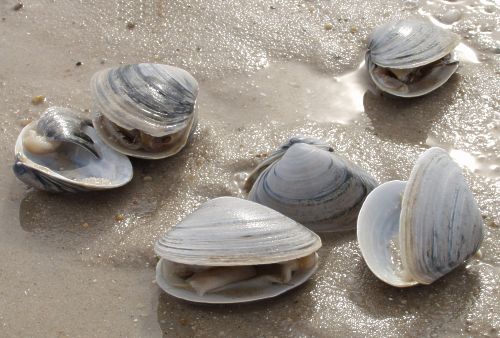How to Dig Clams on the Oregon Coast

Clam digging seems simple enough in concept – you stick a shovel into some beach sand, and draw out a clam. However, the entire process requires a lot of hard work, and it might take some time before you manage to collect enough clams for the clam chowder you plan to make, or for a good old-fashioned clam bake. A good location for the activity is the Oregon Coast, where clams are plentiful – all you need is the right equipment and some guidelines to get started.
Things Required:
– A pair of boots
– A shovel
– A bucket
– A shellfish license
– A low tide
Instructions
-
1
If you plan to go clam digging on the Oregon Coast, begin by selecting a location. Good spots for clam digging on the Oregon Coast include Coos Bay, Netarts Bay, Tillamook Bay, and Yaquina Bay. A good location to start is Charleston, right outside of Coos Bay – here, you are bound to catch the amount of clams you need within an hour’s worth of hard work.
-
2
Once you select a spot, make sure you look up the tide times the day before you plan to go clam digging. The best time is during a low tide (a negative tide) as clams tend to live underneath the surface of tidal mud flats – this might mean you have to wake up early to catch the low tide times, in order to effectively dig for clams, so make sure you are prepared.
-
3
When digging for clams, make sure you know what sort of clams you are looking for. There are three basic types of clams you can dig for on the Oregon Coast – Empire or gaper clams, Steamer clams, and Cockles.
-
4
Empire clams are by far the largest, and can be quite a handful. These are found closer to the tide, and burrow deep into the sand, owing to which you will need to expend a fair bit of energy to dig them out. Make sure you wear proper boots when you go digging for these, as it can get messy – however, the finished product of a pan-fried or stuffed Empire clam will more than make up for all the hard work.
-
5
Steamer clams are small in size, and are the most popular variety of clams – however, this also makes them harder to find. Steamer clams live near the surface, but much farther away from the tide, and are frequently found on the menus of restaurants.
-
6
Cockles are the easiest clam type to dig, as these live nearer to the surface. Small, and tender in texture, these make for a great clam chowder, and can also be eaten raw if they are absolutely fresh.







